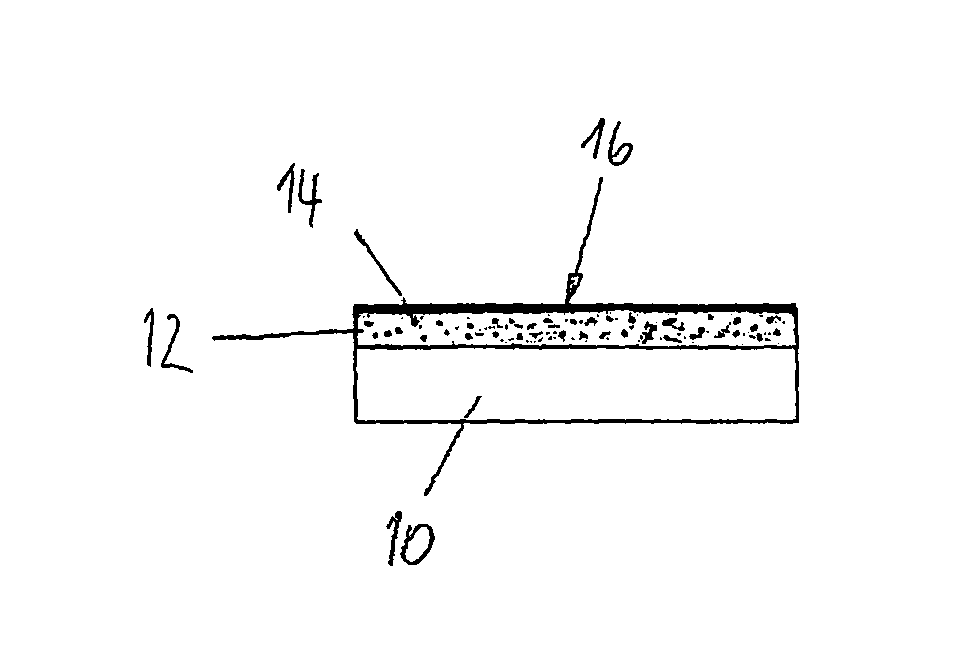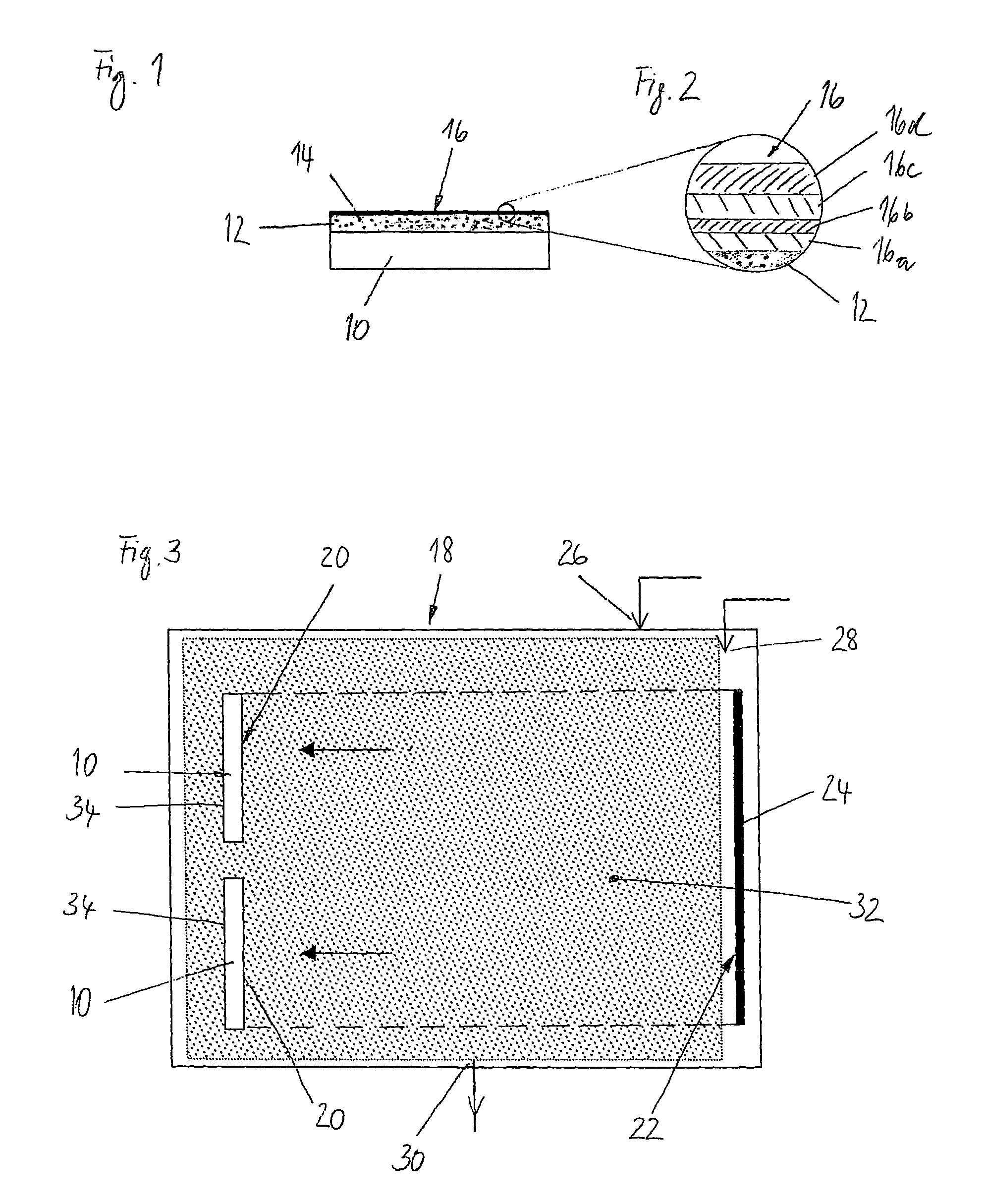Process and apparatus for applying optical coatings
a technology of optical coatings and apparatuses, applied in vacuum evaporation coatings, electrolysis components, coatings, etc., can solve the problems of reduced adhesion, reduced suitability, and possible even flaking off of layers,
- Summary
- Abstract
- Description
- Claims
- Application Information
AI Technical Summary
Benefits of technology
Problems solved by technology
Method used
Image
Examples
Embodiment Construction
[0020]FIG. 1 shows a substrate 10 with a coating which has been produced using the process according to the invention or by means of the apparatus according to the invention. A transition layer 12 (also referred to as a hard layer), in which reaction products 14 formed from precursors are incorporated, has been produced directly above the substrate 10. The reaction products 14 are used to match the mechanical and thermal properties of the substrate 10 to the mechanical and thermal properties of an antireflection layer system 16 above it. This ensures that the substrate 10 is mechanically compatible with the layer system 16. An increased elasticity and therefore improved matching of the transition layer 12 prevents the generally very brittle, inorganic layer system 16 from becoming detached. Therefore, the transition layer performs a bridging function between the substrate 10 and the layer system 16.
[0021]The transition layer 12 which is shown in FIG. 1, has been applied to a substra...
PUM
| Property | Measurement | Unit |
|---|---|---|
| partial pressure | aaaaa | aaaaa |
| distance | aaaaa | aaaaa |
| distance | aaaaa | aaaaa |
Abstract
Description
Claims
Application Information
 Login to View More
Login to View More - R&D
- Intellectual Property
- Life Sciences
- Materials
- Tech Scout
- Unparalleled Data Quality
- Higher Quality Content
- 60% Fewer Hallucinations
Browse by: Latest US Patents, China's latest patents, Technical Efficacy Thesaurus, Application Domain, Technology Topic, Popular Technical Reports.
© 2025 PatSnap. All rights reserved.Legal|Privacy policy|Modern Slavery Act Transparency Statement|Sitemap|About US| Contact US: help@patsnap.com


